Villages of Maharashtra’s coastal district have long been obsessed with cricket. But local boy Shardul Thakur breaching the India World Cup squad has made the coaches ambitious. mid-day travels through the industrial and fishing town’s cricket pitches to see them prep for an impossible-achievable dream

Sixteen-year-olds (from left) Nived Chandan Mishra, Aryan Jitendra Patil and Khush Manish Lakhani currently train at the cricket turf in Palghar Dahanu Taluka Sports Association (PDTSA) in Boisar. The young aspirants hope to qualify for Mumbai U-19 and dream of playing for India someday. Pic/Satej Shinde
In the dusty recesses of Tarapur MIDC in Boisar, where small scale industries have mushroomed, providing employment to the local fishing and agrarian communities, open green spaces are not easily visible. Arriving here at 10 am, on a road flanked by factories, we search for an entrance that can lead us to Palghar Dahanu Taluka Sports Association (PDTSA). We go around in circles, courtesy Google Maps, taking a wrong gate more than once, before the car crawls into a gully, pock-marked with potholes. On the other end is a white iron gate that opens into a large green field dotted with netted cricket pitches.
Bipin D Patil, general secretary of the PDTSA, has been here since 8 am, training a group of boys and girls from the nearby villages of Palghar. He is joined by cricket coach Bharat Chamre. The duo will only call it a day around noon, when the players pack up to make it in time for their school or college classes. “Shardul Thakur trained here,” says Patil, when he catches us stare at a banner comprising a collage of photographs of its star players, including the India fast bowler whose speed gun pace has earned him the moniker Palghar Express. Thakur has made it to India’s ICC ODI World Cup 2023 squad for the first time, with the team playing its first match against Australia in Chennai today.
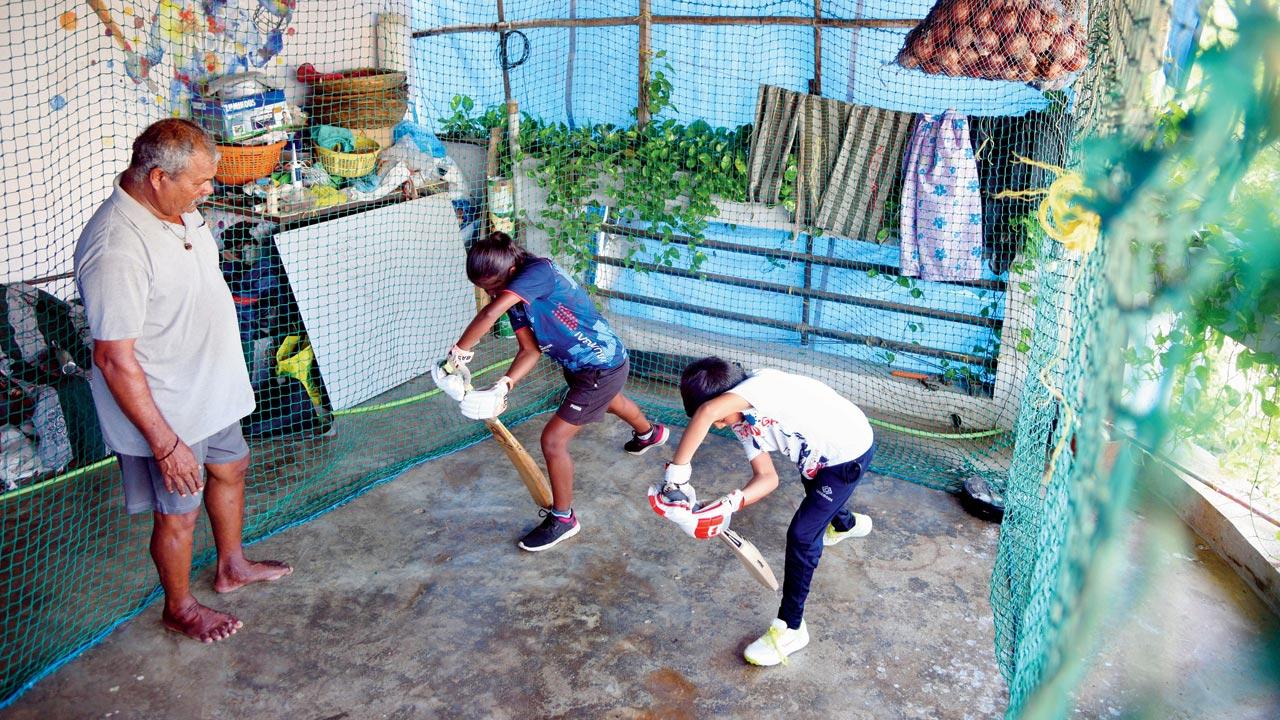 Coach Bharat Chamre training Mumbai U-15 player Snehlata Dhangada, 15, and nine-year-old Ambar Patil at his home in Wadrai pada, Kelve Mahim. Pics/Satej Shinde
Coach Bharat Chamre training Mumbai U-15 player Snehlata Dhangada, 15, and nine-year-old Ambar Patil at his home in Wadrai pada, Kelve Mahim. Pics/Satej Shinde
The mood is upbeat at the Boisar ground. While Team India is top contender for the coveted trophy, everyone here is rooting for local hero Thakur. “He has made it possible for all of us to dream,” says Ashley Patrick D’Souza, who played for Mumbai U-19 in 2021. D’Souza hails from Devisha Road, and travels 30 minutes daily to train at this ground. He studied at Anand Ashram English High School, where Thakur also did his early schooling. Here, D’Souza’s father was a cricket coach. “My dad remembers coaching him,” he shares. D’Souza’s eldest brother Silvester has also played for Mumbai.
“None of us ever imagined getting there [Mumbai],” he confesses, “But when we started watching Shardul on TV, playing against some of the leading giants, we felt that so could we.”
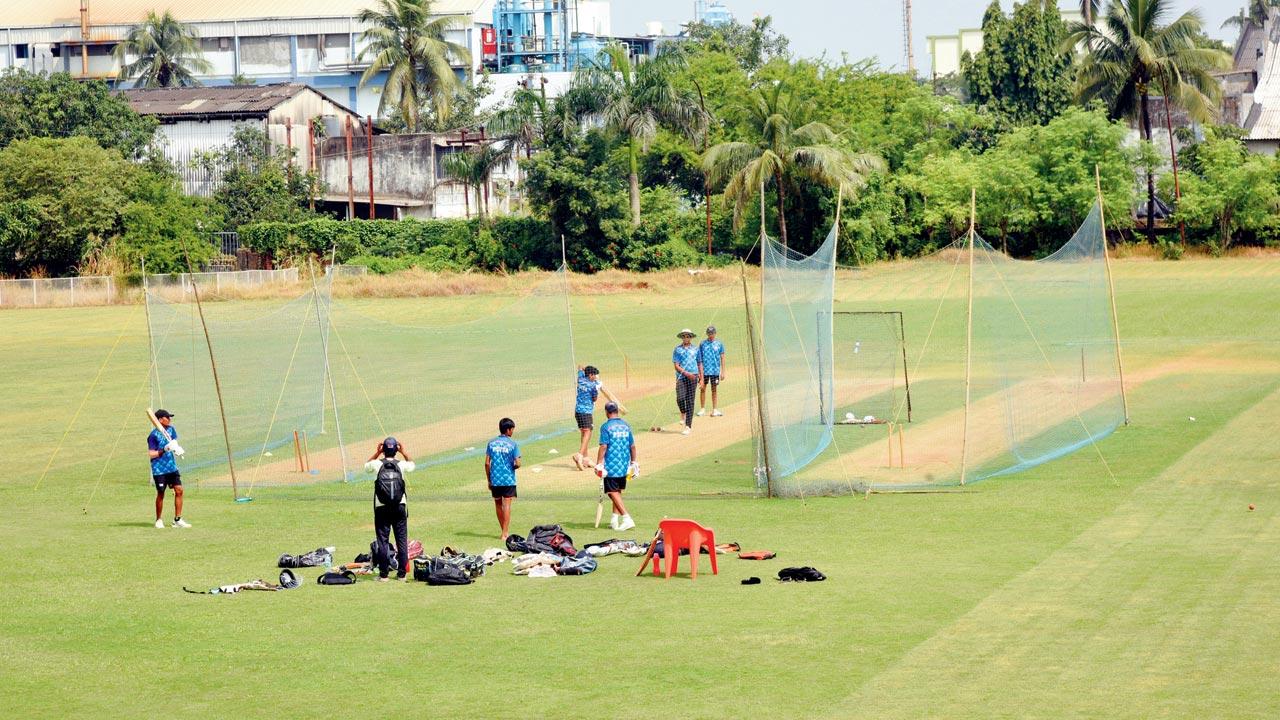 A group of boys practising on the pitch at the Palghar Dahanu Taluka Sports Association (PDTSA) ground in Boisar. Sharad Pawar, who was then president of the Mumbai Sports Association, facilitated the allotment of this open space for cricket
A group of boys practising on the pitch at the Palghar Dahanu Taluka Sports Association (PDTSA) ground in Boisar. Sharad Pawar, who was then president of the Mumbai Sports Association, facilitated the allotment of this open space for cricket
Dreams are slowly being realised. On a board near the PDTSA office, there’s a poster listing the achievements of 17 players in 2021-22. Thakur is the cream of this crop, having played for Team India; so is Sharvi Save, who played for the India U-19 women’s cricket. The rest have represented the various Mumbai U-15/19/25 teams. “We are now aiming higher,” exclaims Bipin Patil. At his office, he shows us the goal they have set for the year 2025—five players from Palghar to play for Team India and the Indian Premier League each; 10 to represent Mumbai and a minimum of 20 at least in the Maharashtra Premier League.
Possible? “Forty years ago, definitely not,” he admits.
For the longest time, Palghar’s cricket remained only in Palghar. Like any cricket-loving town, it had its share of small and big tennis ball tournaments. “Villages had their own cricket clubs, and we’d play against each other every time someone organised a match. But it was only a hobby,” says Patil, “If you received a good education, you were expected to get a well-paying job in the nearby industries.” Patil did exactly that.
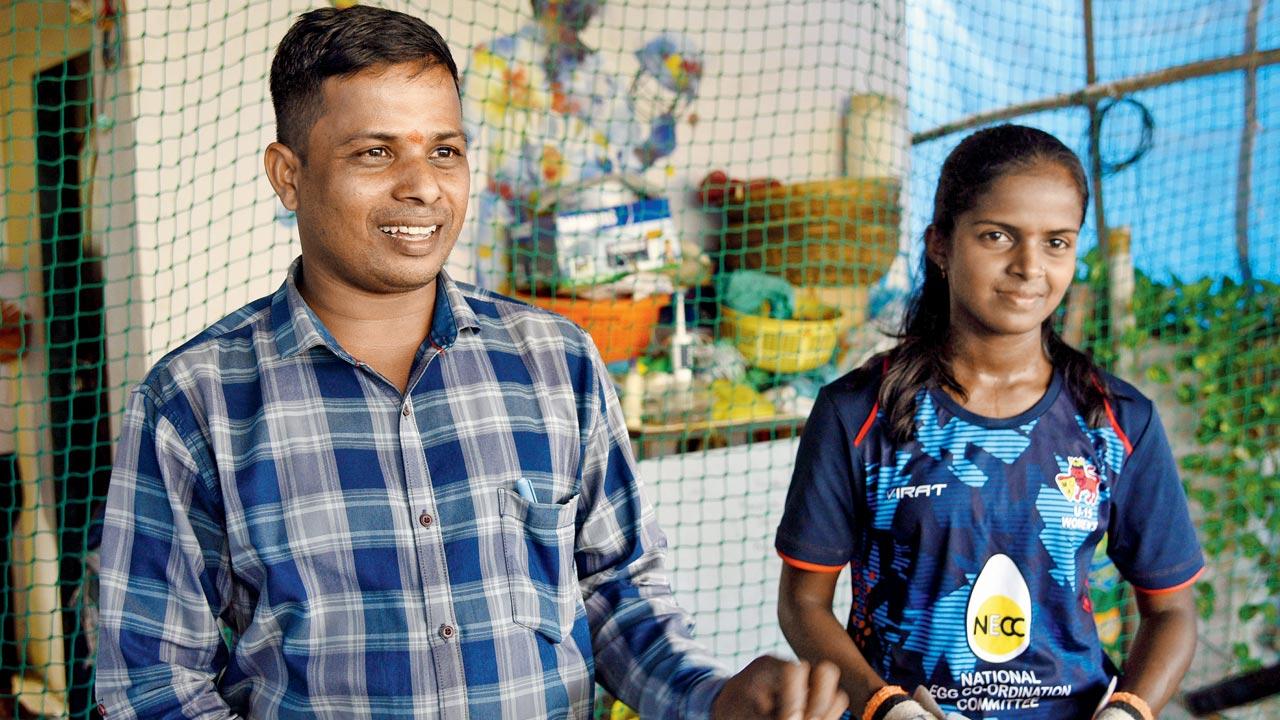 Snehlata Dhangada, who played for Mumbai in December 2022, with her father Kamlakar, a teacher in Bahadoli. Kamlakar has adjusted his school timings around his daughter’s coaching sessions in the morning and evening. “In our village, girls don’t play cricket,” says the Khamloli native, “But, this is what she wanted, and my wife and I didn’t want to leave any stone unturned”
Snehlata Dhangada, who played for Mumbai in December 2022, with her father Kamlakar, a teacher in Bahadoli. Kamlakar has adjusted his school timings around his daughter’s coaching sessions in the morning and evening. “In our village, girls don’t play cricket,” says the Khamloli native, “But, this is what she wanted, and my wife and I didn’t want to leave any stone unturned”
Originally from Saphale in Palghar taluka, he studied at Annasaheb Vartak College, Vasai, where he played cricket at the university-level, before joining as a trainee officer in the Special Steel Wire Rod Mill, run by Shapoorji Pallonji in Boisar. This was the early 1980s. “We didn’t have cricket here, but we did have [trade union leader] Sharad Rao’s labour union,” he jokes. In 1983, Rao ordered a strike, and all the labourers stopped working. “Our bosses at Shapoorji Pallonji had, however, instructed all the officers to continue production at the mill. So, we started operating the machines on our own,” he remembers, adding that for six months the staff lived inside the mill. “With nothing else to do, we started bonding with our seniors over cricket during the weekends.” Around then, the idea of developing a cricket ground in the industrial township took root.
In 1984, they received funding of R4,000 to develop a ground in Kurgaon, not far from where PDTSA stands today. “We did some research, and learnt about cricket matting being available in Surat. So, we purchased that for R1,700, brought it by train with us, and laid it on the ground,” Patil recounts, “That’s how cricket began in Boisar.”
 A small group of boys seen playing cricket after school in the coastal village of Satpati
A small group of boys seen playing cricket after school in the coastal village of Satpati
In 1988, says Patil, Shapoorji Pallonji Group sold their shares to Tata Steel; the latter started a dedicated sports fund for its cricket-obsessed employees.
The ground was converted into a turf in 1990, with the help of groundsmen from Azad Maidan in Mumbai. Two years later, Tata Steel organised a charity match for Tarapur Medical and Research Charitable Trust Hospital between Tata Sports Club and Team India, which included legends like Dilip Vengsarkar and Sachin Tendulkar. “Being able to see these players from such close quarters bolstered everyone’s confidence,” he recalls. “After that, we created such a solid team that we started participating for the Times Shield.”
In order to inspire locals, as well as recruit talent for their team, they organised a Presidential Tournament, where several village clubs—Wadrai, Mahikavati Mahim, Shirgaon, Satpati, Dahanu, Vangaon and Chinchani (Jolly) Cricket Clubs—were encouraged to participate. “This is where Shardul Thakur comes into the picture,” Patil informs us. Thakur’s father Narendra Thakur led the Mahikavati Mahim Cricket Club from Kelve Mahim. “At the time, Shardul was six or seven… he would join his father to watch the game.”
 Bipin D Patil, general secretary of the PDTSA, and coach Bharat Chamre at the association’s office. It was Patil who convinced Chamre to pursue coaching
Bipin D Patil, general secretary of the PDTSA, and coach Bharat Chamre at the association’s office. It was Patil who convinced Chamre to pursue coaching
Even as Patil worked on building a formidable team, the late cricket umpire AM Mamsa who was a friend, suggested that he do something bigger for Palghar cricket. “He asked, ‘What would happen after I retire? Who would take on the mantle?’” It was on Mamsa’s advice that Patil and other cricket playing members of Special Steel registered the Palghar Dahanu Taluka Sports Association in 1997. “Tata Steel continued to support us through this time,” he says.
Once the sports association was formed, PDTSA was able to participate in the Kanga League Knock-out in Mumbai. “In 1998, we won the knock-out, and for the first time, were able to enter the lower division of Kanga League [a cricket competition with a legacy that goes back to 1948].”
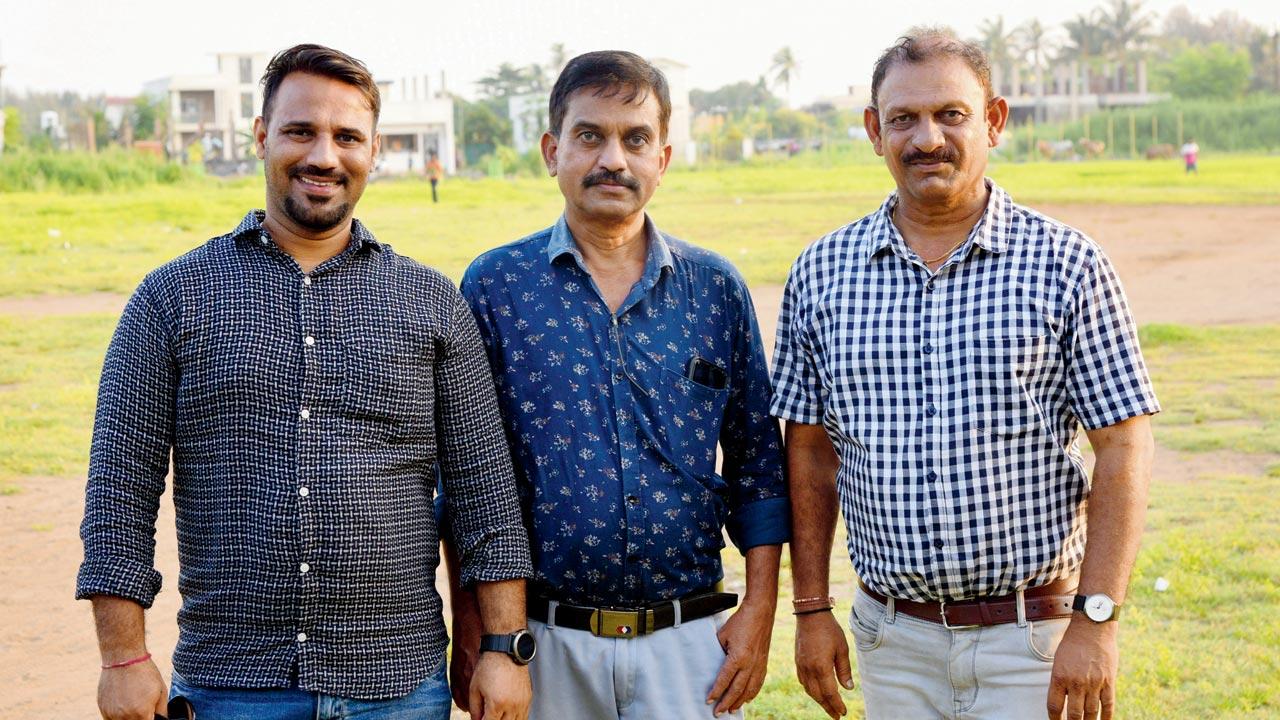 (From left) Deputy Sarpanch Abhijit Nishikant Tare, Satpati Krida Association president Vijay Mukund Raut and former sarpanch Arvind Patil have spent the last many years fighting to reclaim the cricket ground, so that kids can enjoy the sport. They now plan to convert it into a cricket turf, where MCA can organise coaching camps
(From left) Deputy Sarpanch Abhijit Nishikant Tare, Satpati Krida Association president Vijay Mukund Raut and former sarpanch Arvind Patil have spent the last many years fighting to reclaim the cricket ground, so that kids can enjoy the sport. They now plan to convert it into a cricket turf, where MCA can organise coaching camps
Like Mamsa, Professor Ratnakar Shetty, former Chief Administrative Officer of the Board of Control for Cricket in India (BCCI), also egged them to push the envelope. “Professor Shetty said we should start coaching young talent,” Patil remembers. “We approached Shardul’s father Narendra, an all-rounder then, asking if we could organise a cricket coaching camp in Bhuvnesh Kirtane Vidyalaya in Kelve Mahim. He made the arrangements, and also got Shardul to the camp,” he says, “We selected 15 boys from Kelve Mahim… Shardul was among them.”
Even at the age of eight, the boy was a treat to watch on the field. Patil says back then, he was a great batter. A coach from Boisar, Vidyadhar Patil, would travel daily to Kelve Mahim to train the 15 boys. “He saw something in Shardul, and told us about it.” At the time, Shardul was studying at Anand Ashram English High School. “We asked his father if he could be shifted to Tarapur Vidya Mandir School in Boisar, as we were planning to start cricket there. He agreed. His serious coaching began only after that.”
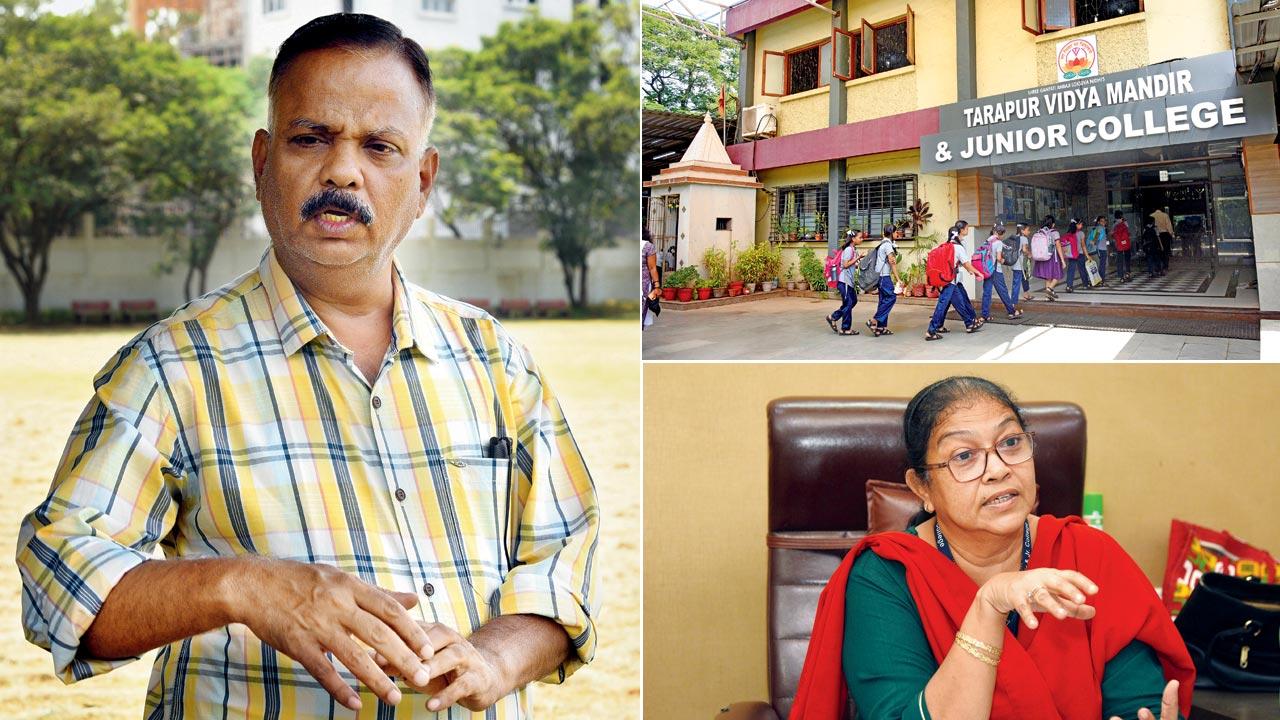 Tarapur Vidya Mandir and Junior College in Boisar is the only school from Palghar to participate in the Harris and Giles Shield cricket tournaments held in Mumbai. Apart from India fast-bowler Shardul Thakur, it has churned out other star players including Ayush Thakur, Pratik Yadav, Hardik Tamore, Sairaj Patil, and recently Atif Attarwala. School principal Joan Raymond Rosario and PE teacher Prakash Palsule say that because of these children, everyone knows about Palghar
Tarapur Vidya Mandir and Junior College in Boisar is the only school from Palghar to participate in the Harris and Giles Shield cricket tournaments held in Mumbai. Apart from India fast-bowler Shardul Thakur, it has churned out other star players including Ayush Thakur, Pratik Yadav, Hardik Tamore, Sairaj Patil, and recently Atif Attarwala. School principal Joan Raymond Rosario and PE teacher Prakash Palsule say that because of these children, everyone knows about Palghar
The history of professional cricket in Palghar perhaps runs parallel with that of Thakur’s involvement in the game. In 2003, as Thakur continued to hone his footwork and cover drives, something unthinkable happened.
Patil points to a framed photo of NCP chief Sharad Pawar on a wall of the PDTSA office. “You know why we have his photo here?” he asks.
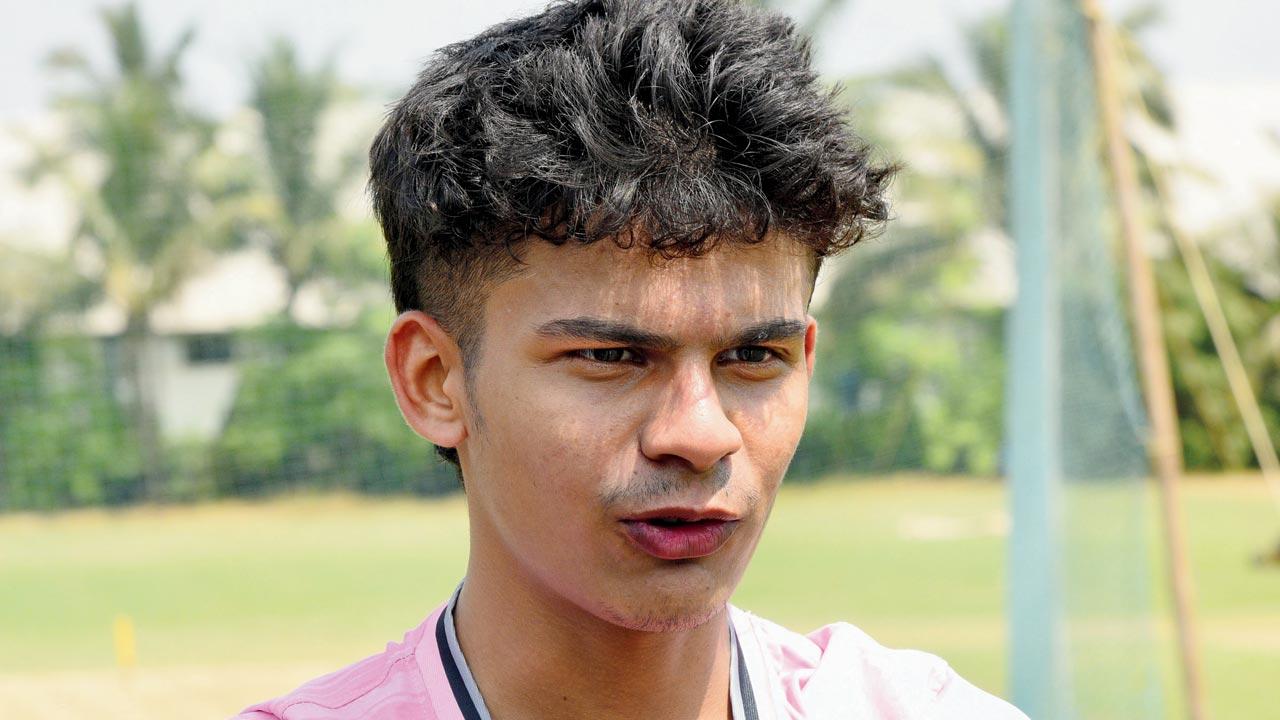 Ashley Patrick D’Souza, who played for Mumbai U-19 in 2021, feels that Shardul Thakur made it possible for many young boys in Palghar to dream about playing for India
Ashley Patrick D’Souza, who played for Mumbai U-19 in 2021, feels that Shardul Thakur made it possible for many young boys in Palghar to dream about playing for India
Pawar had been introduced to Patil by Professor Shetty at the Mumbai Cricket Association office in 2002. Pawar was MCA president at the time. During that conversation, Patil had casually mentioned how Boisar needed a cricket ground. “Pawar didn’t say anything, but later reached out to me. The ground where we are today, is a result of his generosity,” he tells us, adding that Pawar was instrumental in allotting a plot on a 30-year lease for PDTSA in 2003.
After work on filling up the ground with sand and levelling it was completed, Pawar who was then serving as the Union Minister of Agriculture, Government of India, inaugurated the complex on May 28, 2005.
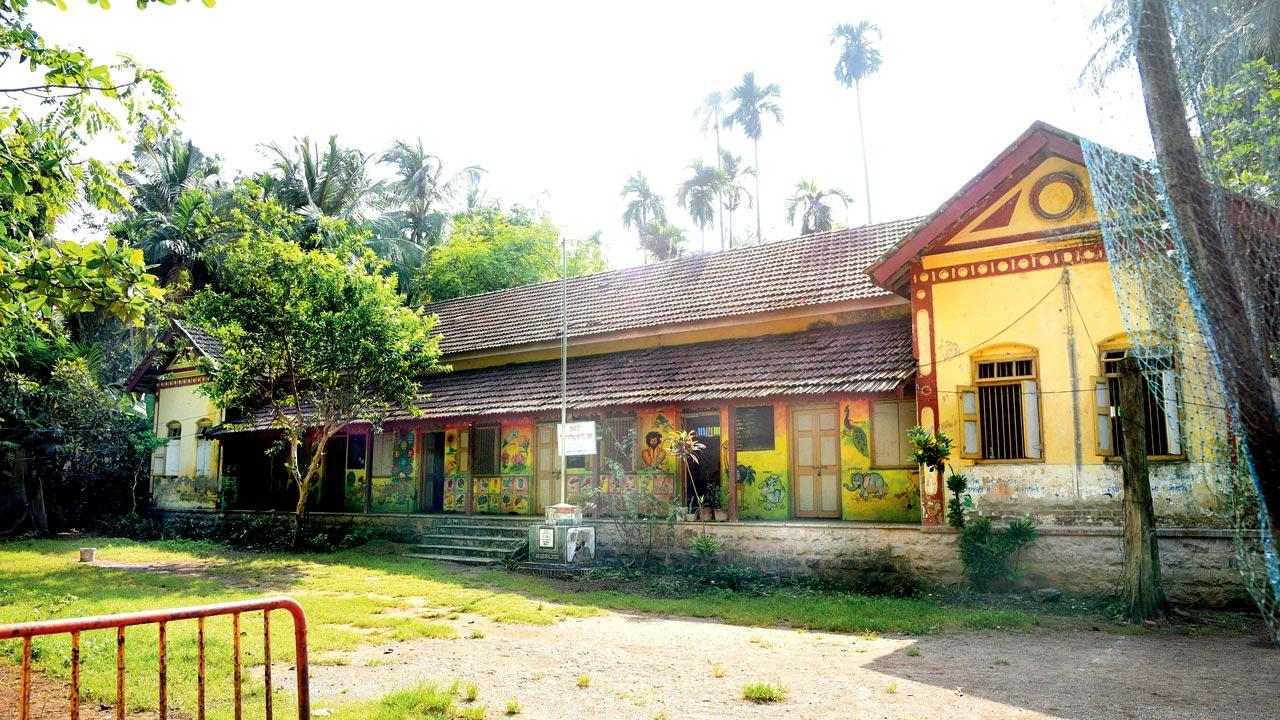 The tiny ground at the Zila Parishad school in Kelve Mahim where, coach Bharat Chamre says, Shardul Thakur plays each time he visits
The tiny ground at the Zila Parishad school in Kelve Mahim where, coach Bharat Chamre says, Shardul Thakur plays each time he visits
Fortuitously, around 2005-06, Tarapur Vidya Mandir School became the first school from Palghar to participate in the Harris Shield Inter-School Cricket Tournament organised by Mumbai Schools Sports Association. “Much to everyone’s shock, we reached the finals as well.” The tournament also saw Thakur give his career best performance—“six sixes in six balls, against Swami Vivekanand School in Borivli.”
The coach at Swami Vivekanand, Dinesh ‘Raju’ Lad, convinced him to enrol at their school. “He told us ‘Palghar is a village. This is a city’. If he was keen on a future in cricket, he had to move. Shardul stayed in Borivli for the next few years, coming to practice at our ground during the weekends.” He returned to Palghar after completing Class XII, playing for the Mahikavati Mahim Cricket Club. He spent time training with coach Bharat Chamre, who “helped him improve his line and length in bowling”. Thakur was eventually given a contract by Tata Steel to play for Tata Sports Club. Former Mumbai captain Milind Rege picked him to play the Ranji Trophy, making him the first Palghar player to participate in the national championship.
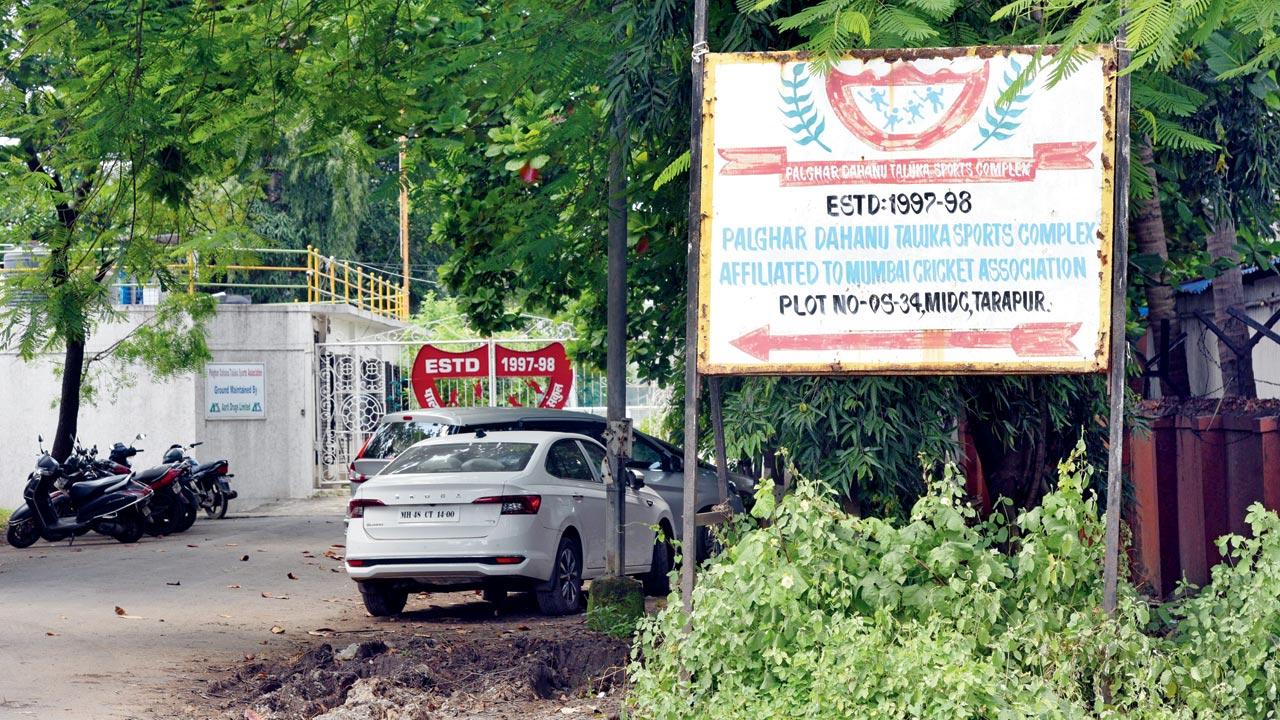 The Palghar Dahanu Taluka Sports Association was founded in 1997-98 with the help of funds pooled in by employees working for Tata Steel
The Palghar Dahanu Taluka Sports Association was founded in 1997-98 with the help of funds pooled in by employees working for Tata Steel
Thakur was selected to debut for India in 2018 against West Indies. “But, unfortunately, he suffered an injury [He was forced to leave the field due to a groin strain after bowling only 10 balls].”
It has been a five-year long wait to the World Cup squad, but Thakur’s efforts haven’t gone in vain. “The maahaul in Palghar has changed,” says Patil. Where children once wanted to become engineers, doctors, and accountants, they are now aspiring to play for India. “Everyone wants to be a cricketer. Everyone wants to be Shardul.” Patil adds, “There was a time when the tag line of PDTSA was ‘Khelo Mumbai’. Today, it is ‘Khelo Mumbai. Khelo Bharat’.”
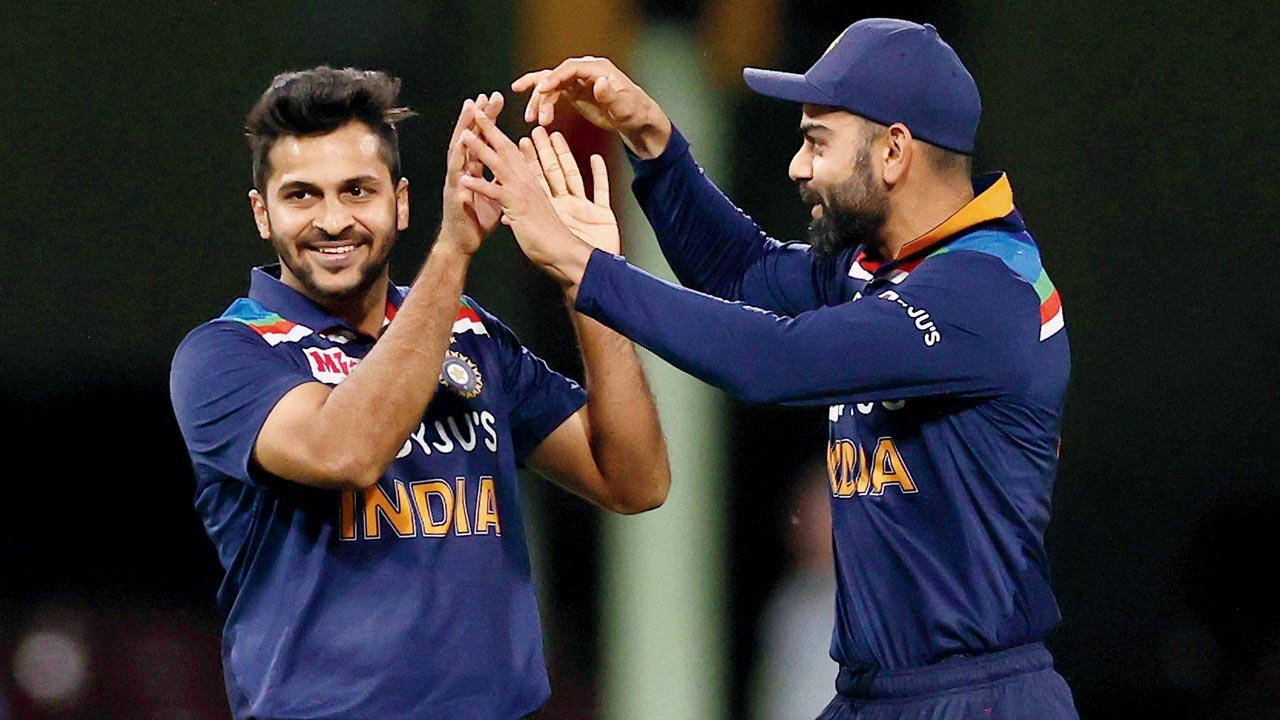 Shardul Thakur and Virat Kohli celebrate after the former took the wicket of Glenn Maxwell of Australia during game two of the Twenty20 International series between Australia and India at Sydney Cricket Ground on December 6, 2020 in Sydney, Australia. Pic/Getty Images
Shardul Thakur and Virat Kohli celebrate after the former took the wicket of Glenn Maxwell of Australia during game two of the Twenty20 International series between Australia and India at Sydney Cricket Ground on December 6, 2020 in Sydney, Australia. Pic/Getty Images
Omkar Malekar, whom we find playing at the ground post noon, says he was 12, when he started playing cricket. “After India won the World Cup [2011], cricket is all I could think of,” the 21-year-old remembers, “A friend told me to visit Bipin sir and Bharat sir here.” Malekar was selected to play for Mumbai U-19 in 2021-22. “The next goal is Team India,” he says, as he returns to the nets to strike the ball one last time, before he wraps up for the day.
The Tarapur Vidya Mandir School and Junior College in Boisar is a 10-minute drive from PDTSA. In the last 20 years, it has become a minefield for young cricket talent from the region.
Joan Raymond Rosario, its principal, says that Tata Steel opened the school in the 1980s, to primarily accommodate the children of families that had moved to Boisar to work in the industries here. “This was the first big private school here,” she says, adding, “The focus was always on all-round development.” Today, it has become the go-to school for students who are interested in cricket. “We follow an open-door policy, and enroll even those who come from beyond Boisar, if they have the talent and need a strong foundation in sports,” shares Rosario. “We are still the only school from Palghar that participates in the Harris Shield and Giles Shield cricket tournaments,” adds PE educator Prakash Palsule.
Apart from Thakur, the co-ed school has churned out other star players including Ayush Thakur, Pratik Yadav, Hardik Tamore, Sairaj Patil, and recently Atif Attarwala. “Palghar did not exist in the consciousness of people, but because of these children, people now know about it,” says Rosario.
Before Bharat Chamre became a cricket coach, he was a huge fan of the game. While at college in Palghar, he wanted to play at the university level. “I came all the way to Wankhede Stadium for the selection, but I was so naïve, I didn’t even wear batting pads,” he remembers, “The selectors sniggered, ‘Pad up kyon nahin kiya?’ The impression was that we were ‘gaavti log’. ‘Yeh log khel nahin payenge’.”
Chamre, who belongs to the Koli fishing community, took on a job in one of the industries and continued to play locally for the Wadrai Cricket Club. After the company shut down, he decided to go back to his family business. “We had a boat, so I started fishing again.”
Bipin Patil, who had been following his game closely, had other plans for Chamre. “He once scored a 100 against our team,” Patil tells us. “He had the skill and knack to become a good coach.” It took a bit of convincing, but Chamre finally agreed to quit fishing. “I did a basic coaching course in Mumbai, and even gave the exam, which I cleared in the first attempt,” Chamre smiles.
Patil says, “I wanted our coaches to learn from the best, only then would they be able to prepare the students to compete against players in Mumbai and beyond.”
At 12.30 pm, Chamre heads back to his home in Wadrai, Kelve Mahim. He asks this writer and photographer to come by at 4 pm. That’s when Chamre’s second coaching shift begins. “Coaching in your home?” we ask, confused. “Yes, nets tayyaar karke rakha hai.” Curious, we visit the village a few hours later. On the way, we stop by the Zilla Parishad School, where Chamre had told us, Thakur would spend hours playing cricket. Thakur’s house, a few metres from there, is locked, as “his family left for Mumbai that morning”, a neighbour tells us.
In the coastal pada of Wadrai, which is several bends away, people are already hard at work. A couple is busy deshelling a tray of prawns on the parapet of their house; on the other side of the road, women are unloading slabs of ice from a truck and breaking it in their tubs; fishmongers are seen carrying the day’s catch on their heads, trailing in the same direction.
The village wakes up again in the evening, Chamre’s wife says. She too is getting ready to leave for the market, where she’ll sell fish till 8 pm. Chamre, who is sitting on his couch, is momentarily distracted—he is watching the Asian Games on television. When one of his students arrives, he asks us to follow him to the top floor.
His terrace has been covered with nets on all four sides. The cement concrete flooring is the temporary pitch. Fifteen-year-old Snehlata Dhangada, who played for Mumbai U-15 in December last year, pads up, and gets ready for practice. A Class X student, Dhangada trains twice daily—at the PDTSA ground in the morning, and later, with Chamre, where he works on her footwork and strokes. “She has been training with me for one-and-a-half years.”
Dhangada lives in Khamloli village in Bahadoli, an hour’s drive from Wadrai. She picked up the cricket bug from her father. “But when I was in Class IV, I saw a women’s cricket match, and realised this is where I wanted to be,” shares the Smriti Mandhana fan. Her teacher father, Kamlakar Dhangada, who shuttles her between home, school and coaching classes daily, feels his daughter is fulfilling a dream of his own. “In our village, girls don’t play cricket. But, this is what she wanted, and my wife and I didn’t want to leave any stone unturned.”
Dhangada’s parents wake up at 5 am. “If my wife makes rotis, I make the sabzi,” says Kamlakar, “Snehlata and I leave for coaching at 7 am. After that I drop her to school, and go to teach.” By 4.30 pm, they are back here. Kamlakar runs other errands while she trains. And when there’s nothing else to do, the doting
father observes her game from a safe distance.
Chamre has a bucket with about 40 tennis balls; Dhangada who is on the other end prepares in strike position, while fellow trainee, nine-year-old Ambar Patil, looks on. For the next one minute, Chamre will rain down balls at her, one after the other—she swings her bat to hit cover and square drives, and flicks, before her coach reins her, instructing her to play front-foot and back-foot defense. Over the next two hours, she will play at least 1,500 balls. “Even more, if she doesn’t perfect her shots,” says Chamre.
Before dusk settles, we leave for Satpati, the coastal village of Palghar, which is famed for providing Mumbai a steady supply of the delicious silver pomfret. The cricket clubs in Satpati have given the Wadrai Cricket Club tough competition in the past.
Arvind Patil, 50, ex-sarpanch of the village, leads us to a large grassy patch, opposite the Satpati Fishermen Sarvoday Sahakari Society Ltd. The ground is uneven and sloping, with weeds mushrooming. On most days, kids trickle in by 5 pm, bats and wickets in tow, and continue to play until it gets dark. Today though, it’s empty, except for grazing cattle and stray dogs, lazing on the sand. “There’s a funeral in the village. Everyone has gone there,” Arvind informs us.
Arvind played cricket here for nearly 35 years. “This was our home turf,” he shares, “Now I am getting old, and don’t have the energy to play.”
Satpati alone has 64 cricket teams. “Every few months, we hold six-over tournaments, which go on for days,” he says. The next tournament is slated for Diwali. On the days of the final matches, fishermen don’t take their boats out and women don’t hawk in the fish markets. Instead, they all huddle around the perimeter of the ground, to watch the game. “People in Satpati are obsessed with cricket,” he says, “And this ground is our lifeline.”
Some 15 years ago, the owner of this property, who until then, had promised to donate this open space to the village, sold it to a developer. But on the condition that he would keep aside a ground for the villagers. The new owner, however, allotted an open space that didn’t fall in the existing location. “The entire village protested,” Arvind remembers.
In 2007, the villagers decided to register a cricket body, Satpati Krida Association, headed by a local, Vijay Mukund Raut. The case went into litigation, says Raut, after they filed a PIL in the Bombay high court. Sometime in 2017, the owner even fenced the ground, causing villagers to ransack the area. Arvind Patil, who was the sarpanch back then, was jailed for 21 days, along with several others.
All this for a cricket ground.
The owner eventually relented, and donated a small share of the allotted land—150 guntha—to the gram panchayat in Satpati. “The fight was worth it,” feels Raut.
A few minutes later, we are joined by Abhijit Nishikant Tare, cricket enthusiast and deputy sarpanch of Satpati. Tare wants to develop this open space into a cricket ground, with proper pitches for young kids to play. “We have a lot of talent in Satpati, but because of the lack of amenities, budding cricketers are forced to cut short their dreams,” explains Tare. “If we play so much cricket throughout the year, it makes sense to now play professionally.” Tare wants to replicate the Boisar model in Satpati. They are, however, struggling to put together funds. “We will need lakhs to clear the ground and level the land with sand,” says Tare, adding that they have managed to get the local governing body to allocate R7 lakh. “But it’s going to cost us a lot more,” he says, “Our hope is that someday the Mumbai Cricket Association will conduct cricket camps here, and selects our boys to play for Mumbai.” Tare says representatives of MCA are visiting this Friday to see the ground, after which they hope to begin work. “Someday, we too, will have Satpati kids playing for India.”
Before we leave, Tare lets us in on unsolicited information. “Shardul and I are friends,” he says. “When he would visit Satpati, we played cricket here, on this
same ground.”
64
No. of cricket clubs present in the village of Satpati, in Palghar district alone
 Subscribe today by clicking the link and stay updated with the latest news!" Click here!
Subscribe today by clicking the link and stay updated with the latest news!" Click here!








